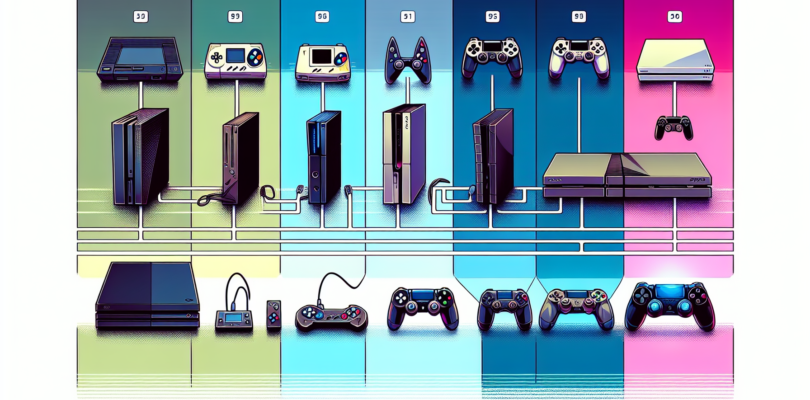The Dawning Era of Xbox
The inception of the Xbox marks a monumental chapter in the annals of video gaming history. Launched by Microsoft in November 2001, the original Xbox not only symbolized Microsoft’s ambitious foray into the gaming console market but also set the foundation for a dynamic, evolving platform. The Xbox was distinguished by its powerful hardware, including an Intel Pentium III processor and a graphics processor that delivered unparalleled visuals at the time, as well as its built-in hard drive, a pioneering feature that significantly enhanced game storage and performance.
Building A Legacy: Xbox 360
The successor to the original Xbox, the Xbox 360, was unveiled in 2005 and became renowned for its vast library of games, innovative online gaming experience via Xbox Live, and groundbreaking services like Xbox Live Arcade and Marketplace. These features not only elevated the gaming experience but also broadened the demographic appeal of gaming. The introduction of the Kinect in 2010, a motion-sensing input device, showcased Microsoft’s commitment to redefining the user interface, allowing gamers and families to interact with their console in novel ways without the need for traditional controllers.
The Red Ring of Death
Despite its success, the Xbox 360 era was also marred by the infamous Red Ring of Death hardware failure, which led to Microsoft extending warranties and taking a significant financial hit to address the issue—demonstrating a commitment to their consumer base even in the face of costly challenges.
The Arrival of the Xbox One
November 2013 saw the introduction of the Xbox One, which aimed to be more than just a gaming console by integrating television controls, Skype, and other multimedia capabilities, positioning itself as a comprehensive entertainment hub. However, its initial reception was mixed due to concerns over digital rights management and the requirement for an internet connection. Microsoft quickly adapted, refining its policies and focusing more intently on gamers, a move that was largely welcomed by the gaming community.
Xbox One Innovations
Throughout its lifespan, the Xbox One saw numerous iterations, including the Xbox One S, which offered enhanced graphics capabilities and a more compact design, and the Xbox One X, the most powerful console of its generation, capable of true 4K gaming. Additionally, the backwards compatibility feature highlighted Microsoft’s commitment to preserving gaming’s historical library and providing value to its user base.
Next-Generation: Xbox Series X and Series S
Entering the new epoch of gaming, the Xbox Series X and Series S were launched in November 2020, representing the fourth generation of Xbox consoles. The Series X, with its superior processing power aiming for high-fidelity, 4K gaming at up to 120 frames per second, and the Series S, offering a more affordable, digital-only gaming experience, both underscore Microsoft’s vision for the future of gaming. These systems emphatically emphasize speed and performance, leveraging a custom SSD for reduced load times and a Quick Resume feature allowing players to switch seamlessly between multiple games.
Xbox Game Pass: A Game-Changing Service
Perhaps the most revolutionary move by Microsoft in recent years is the introduction of the Xbox Game Pass, a subscription service providing access to a vast library of games across console, PC, and mobile platforms. This service aligns with the evolving consumption patterns of media, favoring access over ownership, and reflects a strategic pivot towards making gaming more accessible and connected than ever before.
Conclusion
From its bold entry into the gaming console market to its current status as a leader in innovation and game accessibility, Xbox has undergone a remarkable evolution. Each generation of Xbox consoles has brought forward-thinking technology and services that have not only enriched the gaming experience but also set new standards for the industry. As technology continues to advance, the journey of Xbox promises to be an exciting one, with future developments poised to further reshape the landscape of gaming.





